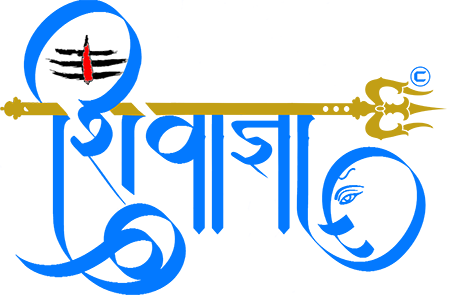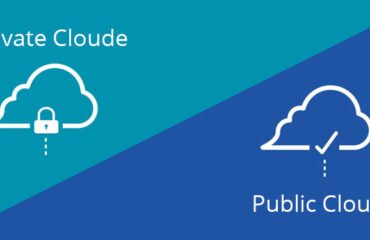Laravel Application Intelligent Monitoring With Telescope

Given the enormous success of the Laravel framework among developers and the exceptional capabilities, it provides to consumers. To produce better performance, every client is actively searching for smarter ways of improving Laravel’s websites and technologies. As a result, we discovered one of the most common frameworks. Laravel has advanced its functionality by including a smart tracking solution called Telescope in the program.
Debugging time can be long and repetitive for any big machine, according to a Laravel developer. However, Laravel’s latest version- Telescope- fills a void in the development workflow and aids in the development of Laravel applications in a comfortable and timely manner. Laravel is already incredibly common with Web developers due to the functionality it delivers, and with the inclusion of the telescope app, they have created the industry’s most comprehensive ecosystem.
It significantly helps in extensively debugging all parameters.
Case 1: As we are constructing the projects
Case 2: Where we need extra assistance for current websites.
This provides access to a wide range of system details, functioning commands, such as requests, loaded views, exceptions, cache information, etc. It’s a debugging environment for the programs that are all included.
How will Laravel Telescope help customers?
The Laravel development team works tirelessly to provide customers with a high-performing, flexible, and streamlined website with code that works flawlessly. Including a telescope, extra hours of debugging websites about whom and about who may not apply the coding are not suitable for individuals. You perform faster and therefore have simple resolutions when anything has to be found in emergencies.
Installation
The Build Laravel Telescope documents can be found. However, in Windows 10, you can experience the issues mentioned below on occasion.
Windows 10 Installation Errors:
- Laravel/telescope is required by the composer.

- Migrate: $php artisan migrate
Nothing is to migrate. - Publish: $php artisan telescope:publish
There were no publishable services to be found. The publication is over.
A solution to this issue was found by our Laravel development team.
Solution:–
- copy all of the text to the file “projects_folders\vendor\laravel\telescope\stubs\telescopeserviceprovider.php” in to the “projects_folders\app\providers\”
- Continuously add TELESCOPE_ENABLED=true in to the .env files.
- At points 02 and 03, run again commands.
Start the script, type PHP artisan serve, and enter http://127.0.0.1:8000/telescope to verify that it has been successfully installed:
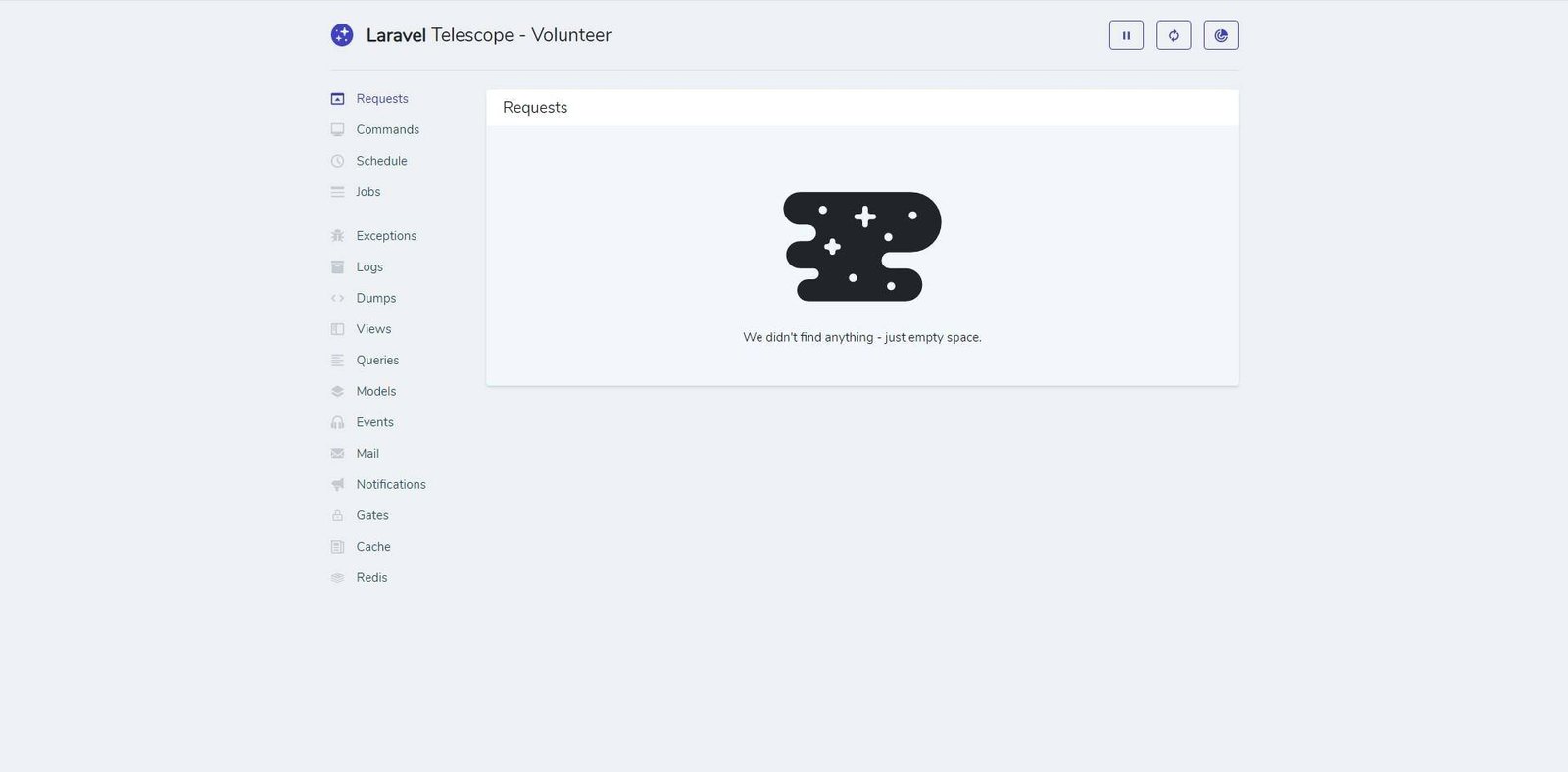
Configuration
The telescope configuration file is located at config/telescope.php.
Here are all options, including routes, storage facilities, watchmen, etc. If a certain order or package is to be overlooked by the watcher, it must be defined here. If the path must be opened, the telescope must be modified, which can also be accomplished in the config file with a different option.
Recognizing the Telescope
Let us examine the numerous telescope sections.
Requests
It provides comprehensive reports about all demands received by the application.

As seen here, opening every request offers information about the request parameters, headers set, and response received.

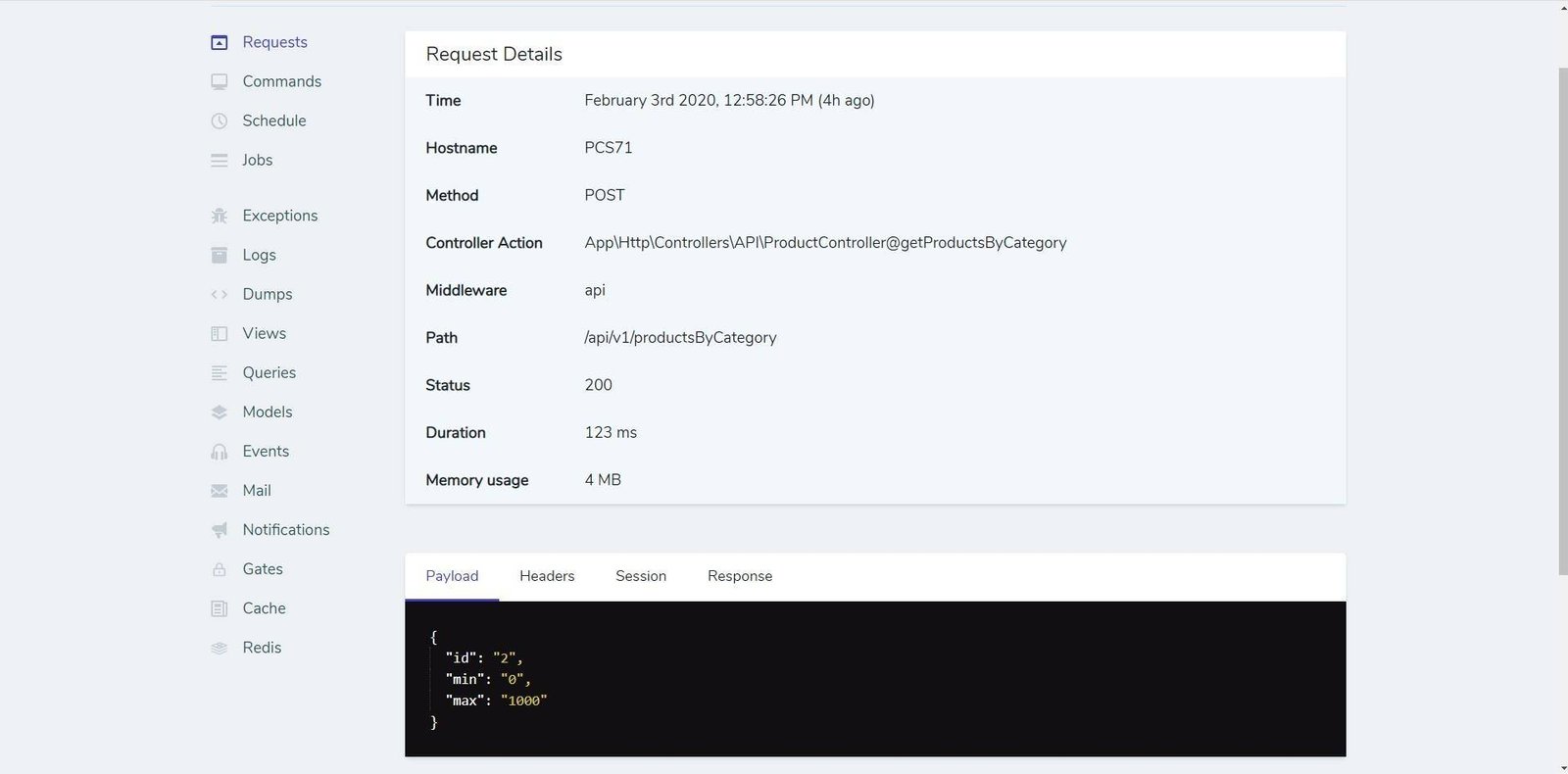
The tab also displays authenticated user records.

Commands
It displays a catalog of all Artisan commands that have been executed.

Know more about the Laravel PHP framework for web artisans
Clicking on the eye icon shows a rundown of the command’s arguments, options, and events.

Schedule
Many times, we have to execute certain activities daily from the software. We do so by designing and planning the crowns to operate at some stage. All of these commands and the outcomes of scheduled activities are listed in this section.
Jobs
If we need to build jobs that will be executed after Laravel has been implemented, we can receive a follow-up email a day later. If the user is planning a zip backup of files, the time consumption will be greater. These jobs are placed in queues, which track and execute them in the order in which they are obtained. There are plenty of these openings here.

Exceptions
Here are the derogations from the submission. Provides both the place and a direction to help you figure out what causes the exception.

Logs
It lists various kinds of logs, such as bugs, warnings, data, and alerts, applied to the application. This facilitates access to files in the store/log section rather than searching them.

Dumps
Several times while debugging the program, we need to verify the attribute, object, or any data. Using the dump() form when managing the Dumps tab
When the telescope is opened, the display is visible here.

Views
This function returns a list of all the views that have been loaded during the user’s interaction with the device. By clicking on the button, information on the data loaded in the view is presented.

Queries
The Queries section is one of the most critical sections that can be found at any time. Including Inbox, Slack, Database, and SMS is an automatic function for sending alerts on various platforms. This allows you to identify all of the queries that took longer to perform and, as a result, need to be revised to improve the page speed and overall usability of the application.

Models
It keeps track of all model updates, such as when a model is produced, modified, revived, or removed.

Events
This section explains all the machine operations and the listener’s awareness.

Lists all of the emails received from the system, including the number of subscribers, the time the email was sent, the topic, and a preview of the email for better comprehension.

Notifications
Laravel has an automated feature to send warnings over multiple platforms, Slack, including Inbox, SMS, and Database.

Gates
We also had to limit the rights of users to comply with their position on several occasions. To do this, we build doors on the AuthServiceProvider/app/providers that handle authorization. The doors and results of the doors are mentioned here.

Cache
The list of hits, misses, warnings, and so forth is shown. The request arising from each cache state is also provided with information.

Restricting access to a telescope
Any person in the surrounding area will be able to use the telescope. In a development context, we can restrict access to a single user by using the app/providers/telescopeServiceProvider gate option where you need to insert an email address. Besides, you can enter several addresses.
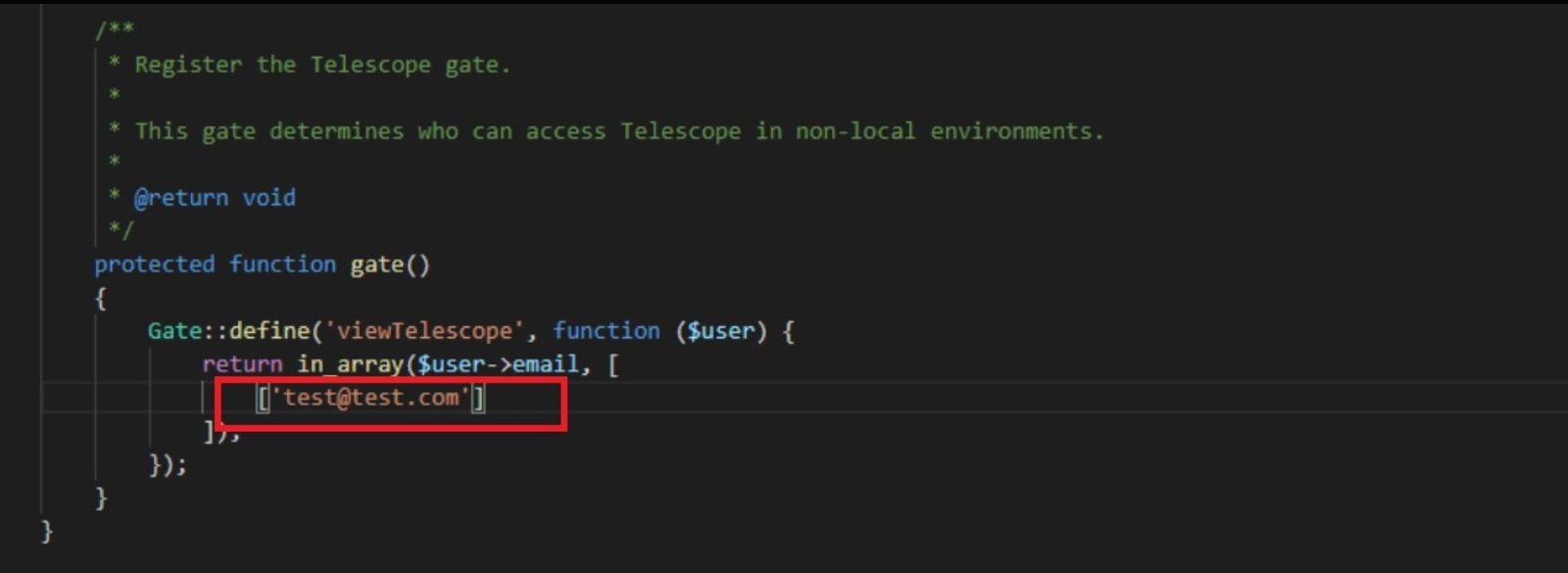
Prune
The telescope entries table stores all telescope data entries. This table is now conveniently compiled. Using the prune button if you want to reduce this.
$schedule->command(‘telescope:prune’)->daily();
You need to apply this order to the application\Console\Kernel.PHP. Both entries will be deleted within 24 hours.
If we need to determine the exact hours when the data should be pruned, we can use the hours’ option $schedule-> command(‘telescope: prune –hours=12’)->daily()
OR
$schedule->command(‘telescope:prune –hours=12’)->hourly()
Tagging
We may want to look for requests that return a 500 error code from time to time. Or
We’d like to look into requests relating to a single person. This is possible with the idea of labeling the ‘telescope’ method.
Telescope::tag method must be applied to TelescopeServiceProvider’s registry function, which will return the submitted requests.
Another form for applying tags By clicking on the monitoring button on the telescope UI, you can add any tag, such as Auth:1, and only requests relevant to the tags will be tracked.
If completed, un-monitoring the button would begin to record requests in the same manner as before.
Conclusion
We showed some of the cutting-edge exceptional functionality that Telescope offers in the blog, and by incorporating it into your application, you can certainly gain a strategic advantage and make mission processing simpler and quicker. We recommend that you use a telescope in all of your efforts to maximize the rewards and remain ahead of the competition.

